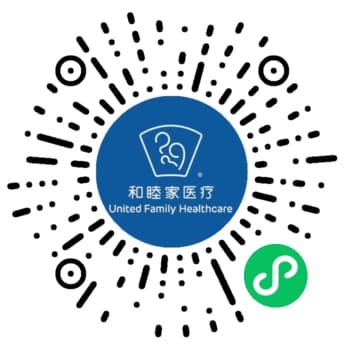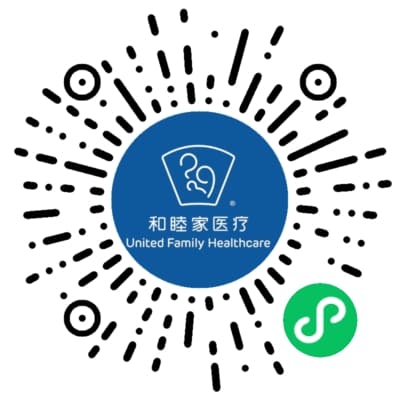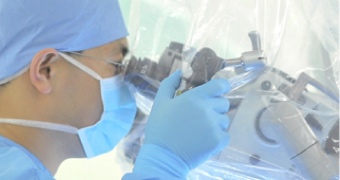On March 20, 2024, the day of the reopening of the Beijing United Family Hospital of Integrative Medicine, a ceremony was held for the release of the Beijing United Family Hospital Surgery Department Development White Paper.
Associate Medical Director in Beijing, Surgery Department Chair, and Urological Surgery Chair at the hospital Zhu Gang spoke to guests, colleagues, and insurance partners at the event on the reason for writing the white paper, its main content, and the outlook for the development of the hospital and United Family Healthcare’s surgery network.
Copies of the white paper being held by Pan Zhongying, Managing Director at UFH for the Beijing, Tianjin, and Shenzhen regions and President at Beijing United Family Hospital; Alastair Mah, Vice President of Medical Affairs at UFH; Sun Fei, Chief Medical Officer at UFH for the Beijing region; Edward Leong, former Hong Kong Legislative Council member, former chairperson of the Hong Kong Hospital Authority, New Frontier board member, and reputed urological surgery specialist; Zhu Gang, Associate Medical Director in Beijing, Surgery Department Chair, and Urological Surgery Chair at Beijing United Family Hospital; and Derek O’Reilly, Chair of Surgery at Beijing United Family Hospital.
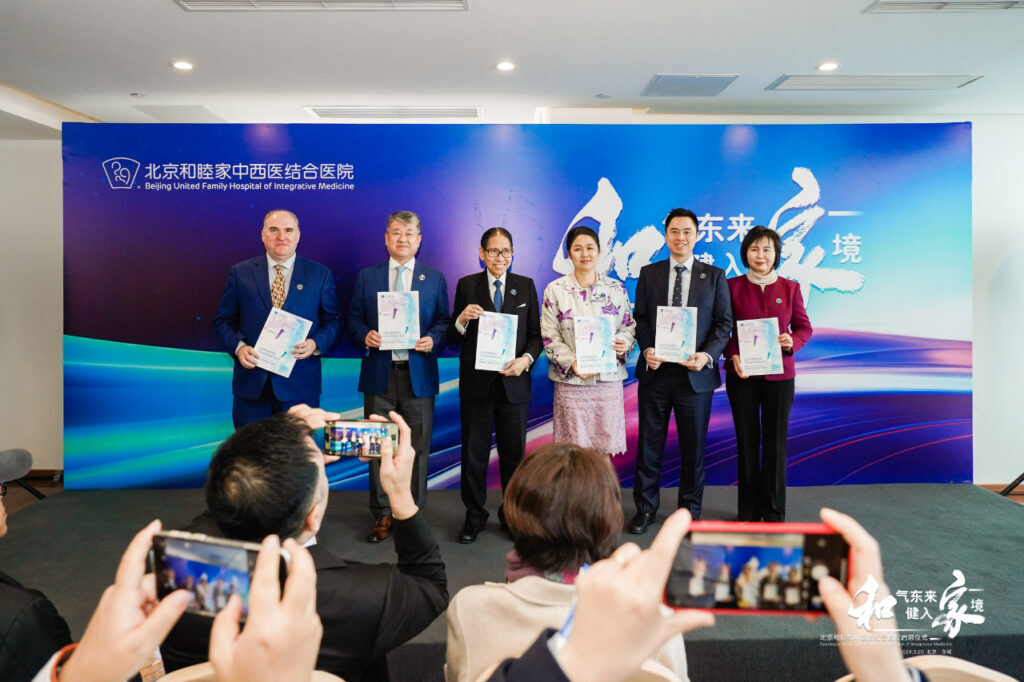
UFH leaders at the event.
UFH has always strived to provide patients with high-quality clinical services that meet international standards and are both safe and efficient.
Prof. Zhu Gang stated, “Surgery is a major part of clinical medicine but a highly risky discipline. Since the founding of UFH, the surgery department at Beijing United Family Hospital has tirelessly worked to boost safety and treatment quality for patients. We are always learning to optimize our medical standards and system by analyzing clinical experiences and lessons. It is in this way that we have achieved world-class standards in medical care.”
“By writing and studying the white paper, we can look back on and make conclusions about our past efforts to reflect on our shortcomings, objectively evaluate the current status, and formulate a development strategy for the future.”
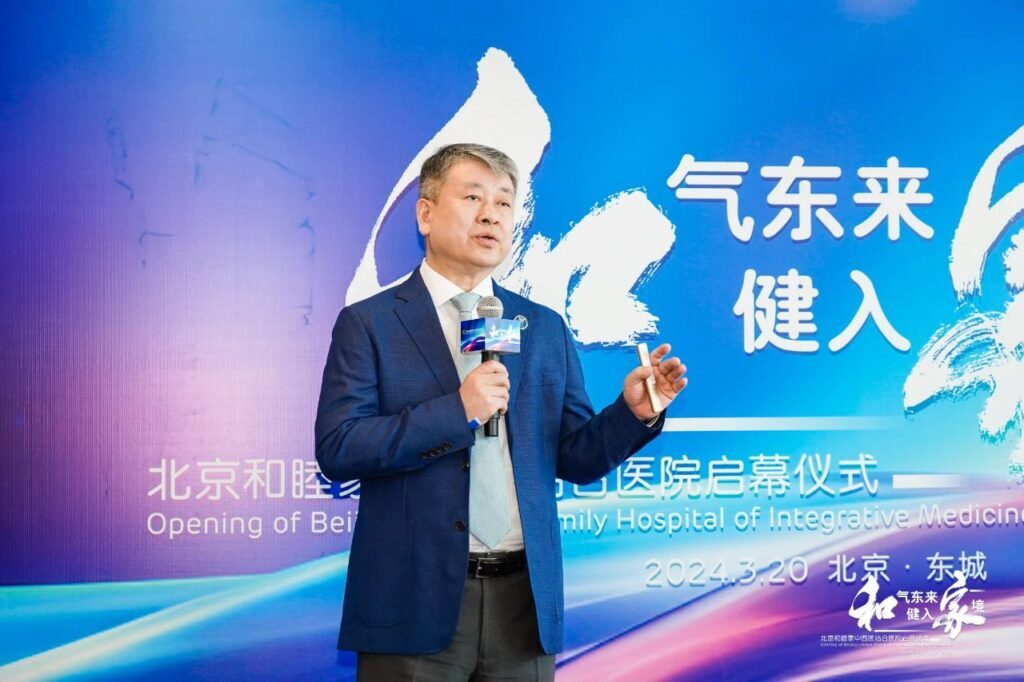
Zhu Gang shared at the white paper release event.
The white paper mainly looks at the past development path, current status, and future direction of surgery. It discusses the vision, mission, sub-specialties, related departments, exceptional resources, quality and safety control indicators, average length of stay, standardized perioperative management, and outpatient procedures of the surgery department at Beijing United Family Hospital.
Since the arrival of the da Vinci Surgical System in 2015, the hospital has used it in over 900 urological, gastrointestinal, hepatobiliary and pancreatic, thyroid, head and neck, hernia and abdominal wall, thoracic, pediatric, and gynecological surgical procedures. The hospital has also collaborated with Beijing Cancer Hospital and Beijing Hospital, both being Tier 3, Grade A medical institutions.
In addition, the surgery department uses such minimally invasive technologies as 3D-imaging reconstruction, holographic imaging navigation (which achieves holographic images fused with a real-time intraoperative endoscopic view), and UroLift, allowing surgical wounds to be smaller, less painful, and quicker to heal.
Strict monitoring of surgical safety and quality indicators ensures patient safety
The white paper lays out several important safety and quality control indicators continually monitored by the hospital’s surgery department:
From 2019 to 2023, the surgery department had an average annual 48-hour unplanned return to operating room rate of 0.21%, which is close to the annual aggregated rate of 0.19% for 185 medical institutions during the same period posted by the Australian Council on Healthcare Standards (ACHS).[1]
31-day unplanned readmission to hospital rate
Definition: The rate for unplanned readmission to hospital as a result of the same or related condition within 31 days.
From 2019 to 2023, the surgery department had an average annual rate for this indicator of 1.15%, lower than the 31-day rates for Tier 3 public (2.13%) and private (1.78%) hospitals in 2021, as reported in the 2022 National Medical Service Quality and Safety Report,[2] and lower than the 28-day rate released in 2022 by the ACHS.[3]

From 2019 to 2022, the average for this figure grew year on year, and the five-year rate was 91.23%.
The surgery department’s average length of stay in 2023 was 3.4 days, lower than the national average of 8.1 days for Tier 3 hospitals posted in the report Status of National Medical Services Between January and May 2023 by China’s Center for Health Statistics and Information, National Health Commission of the PRC.[4]
While monitoring the above indicators of safety and quality, the surgery team works closely with related departments in its high-difficulty surgeries and multidisciplinary treatment models for cancer patients to jointly formulate better personalized treatment solutions. We apply accelerated rehabilitation surgery theory and use the Clavien-Dindo classification system for enhanced standardization of perioperative management.
Overview of the Beijing United Family Hospital Surgery Department
The surgery department places continued attention on patients and safe operations as a major direction in our pursuit of medical care excellence.
From 2019 to 2022, the average for this figure grew year on year, and the five-year rate was 91.23%.
The 2023 TCI for general surgery and urological surgery was better than 100% of Tier 2 general hospitals in the system, showing that the surgery department has a shorter average length of stay than others in the sector.
From 2018 to 2023, the surgery department’s annual number of outpatient surgical procedures was higher than that of elective inpatient procedures, and the annual average number of outpatient procedures accounted for 58% of total procedures, with an overall trend of increase. In 2022, outpatient procedures accounted for 61% of the total.
With the release of this white paper, the surgery department plans to remain patient-centered as we drive our development and innovation and continue to boost treatment quality, maintain a proactive attitude in learning from all that is new in technology and concepts, refine and advance our skills, and optimize the overall quality of treatment in the department.
References:

